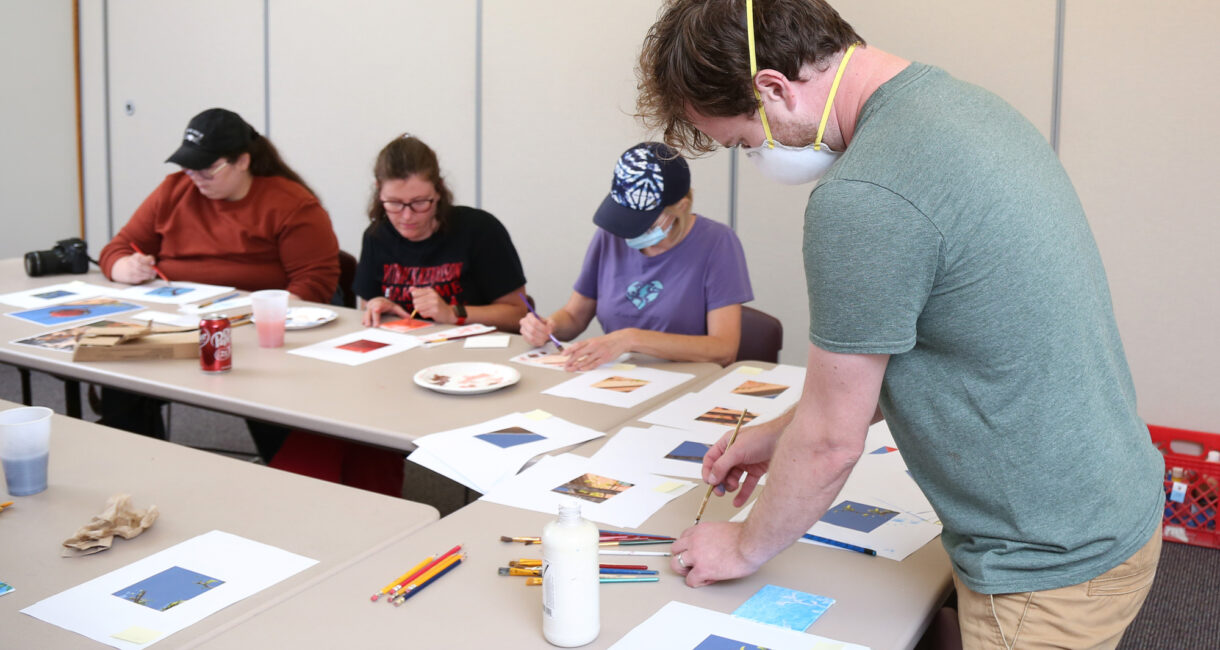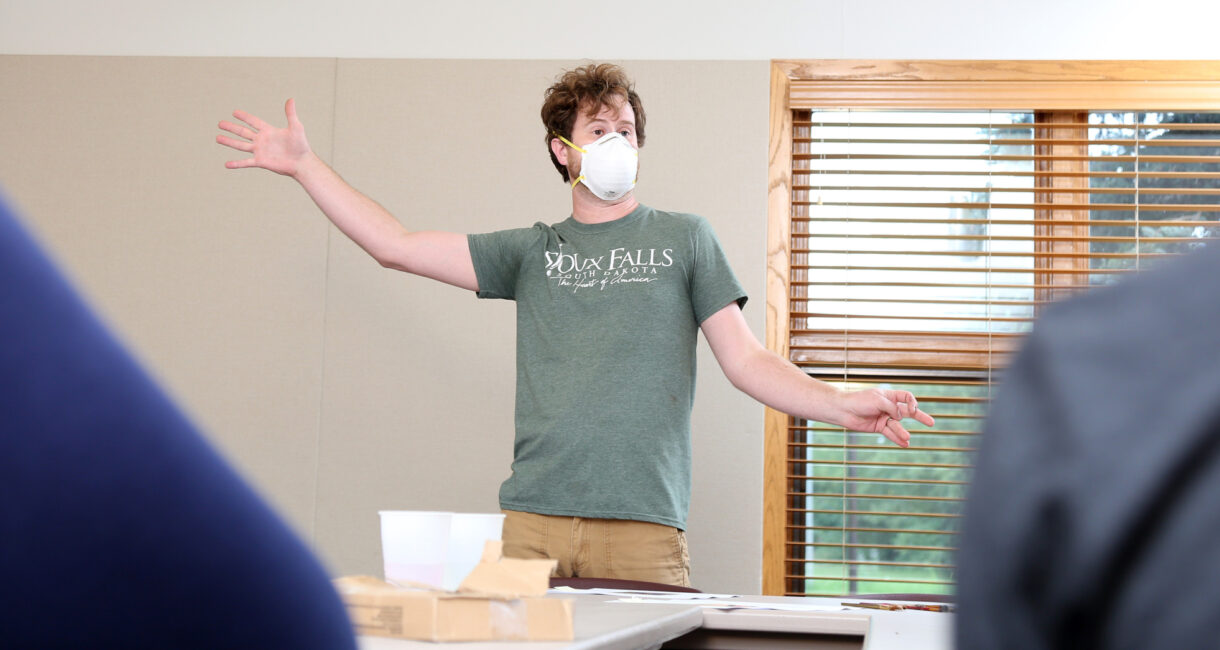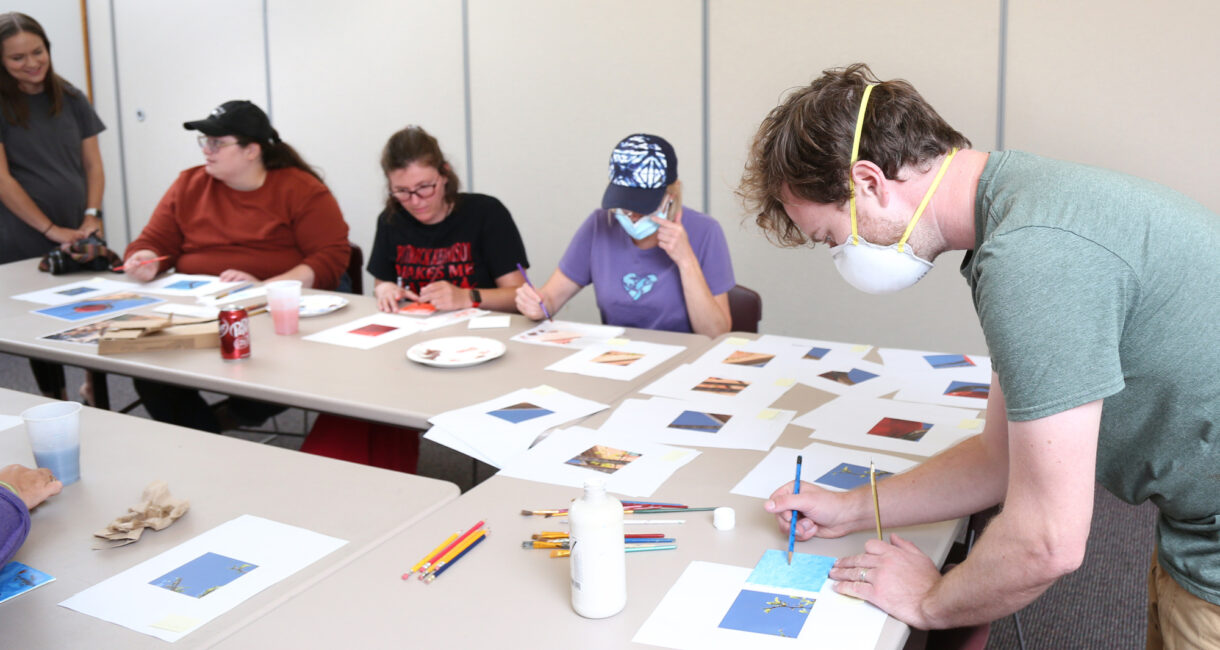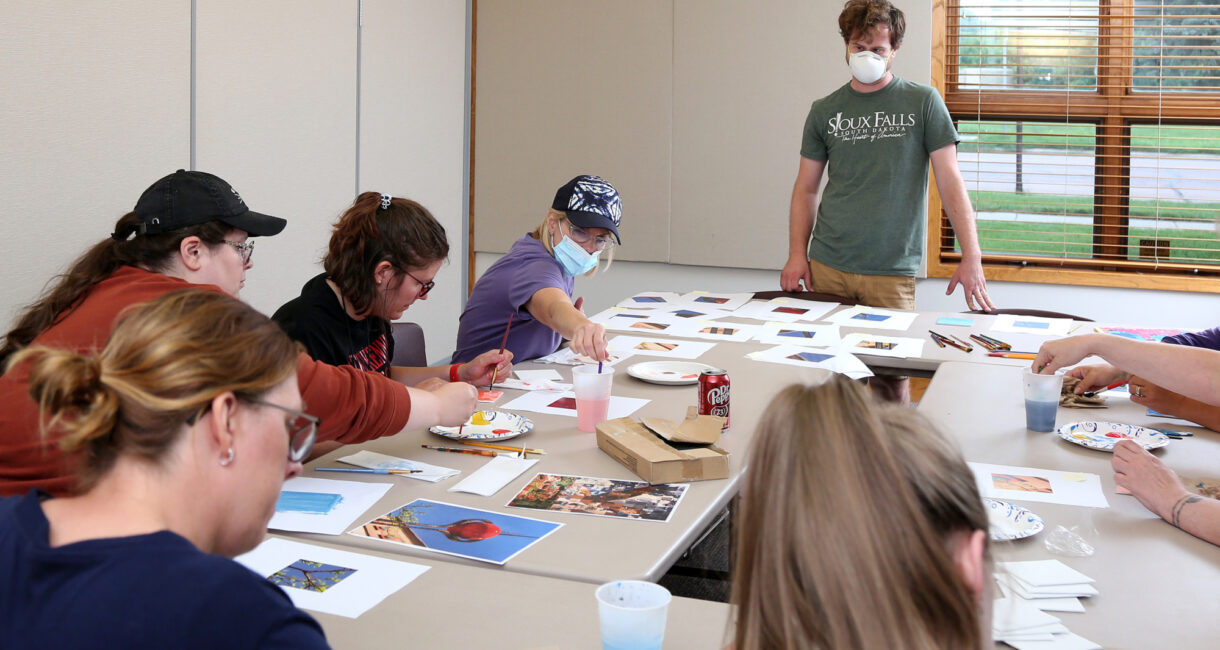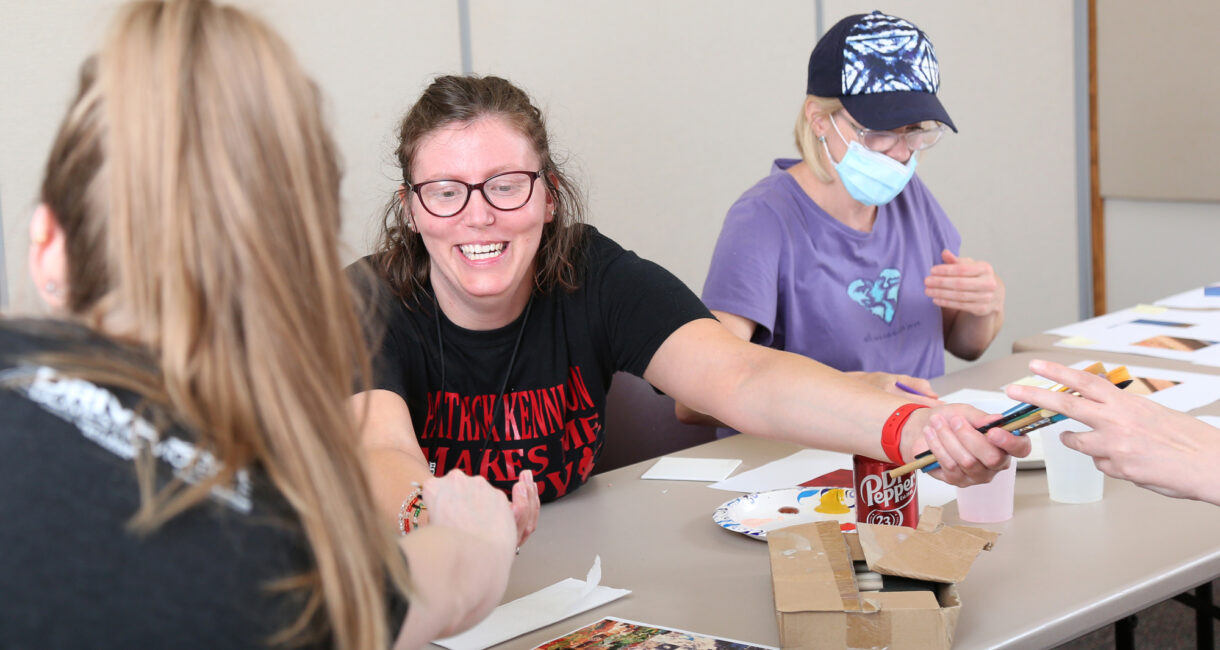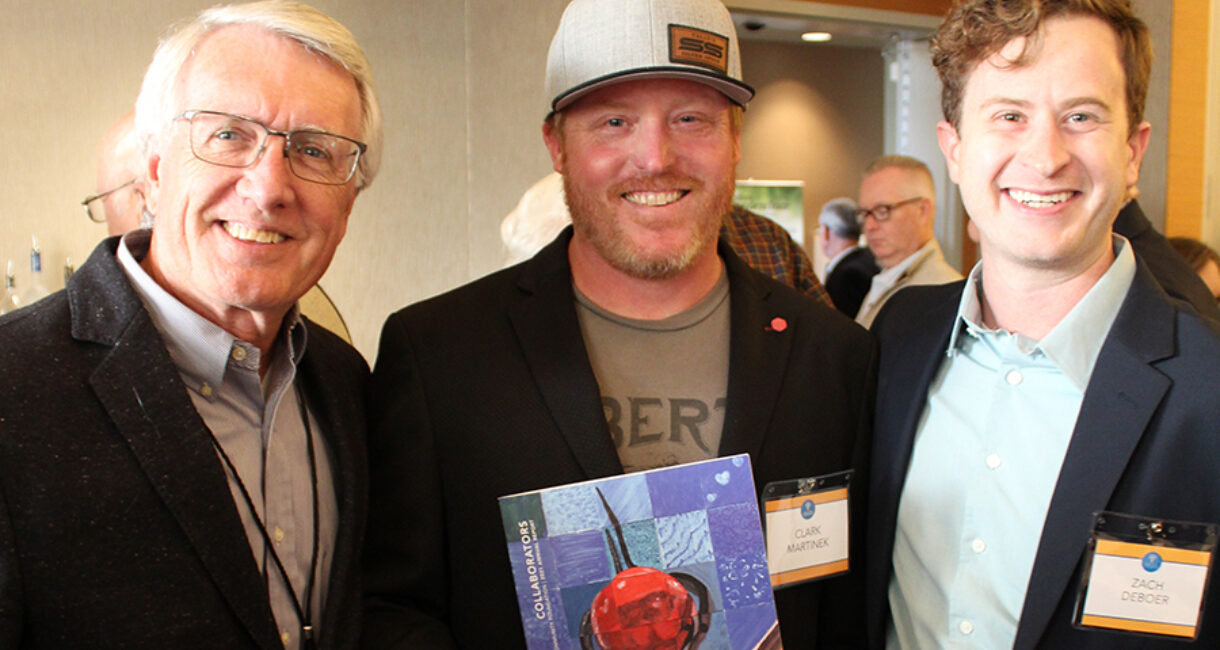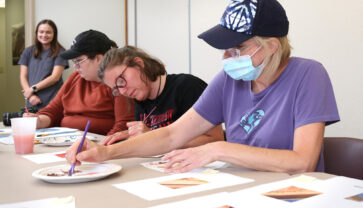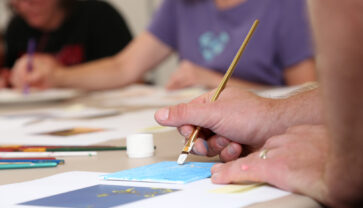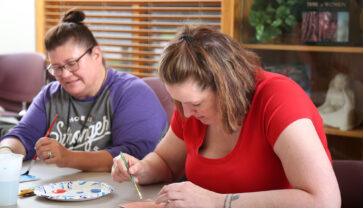Activating Communities Through Art
Bringing People Together Through Art
We believe the arts can connect us and inspire us to pursue new ideas for a better tomorrow. That’s why we’re proud to support local artists like Zach DeBoer, one of our community’s most innovative change-makers, and the creative mind behind “Telephone,” the collaborative art project featured on the cover of this year’s annual report.
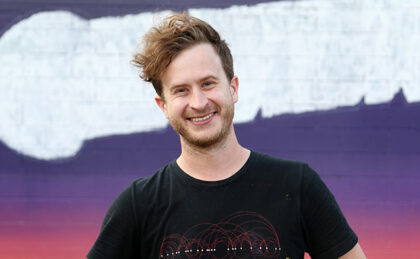
Each year, we commission an original piece of art from a local artist to feature in our annual report. For us, it’s a way to support our local artists, share their stories and, hopefully, ignite a spark in others. Over the years we’ve curated an extensive collection and today, each piece hangs in our office, located in the historic Depot at Cherapa Place.
But this year is different. This year our cover features the work of not one artist, but many. It’s been an amazing collaboration led by local artist Zach DeBoer.
It began with “Beacon,” a sculpture by Clark Martinek featured in this year’s SculptureWalk and sponsored by the Foundation.
“Beacon” was then photographed by local nature photographer Paul Schiller. From there, DeBoer took over, dividing and printing Schiller’s image into 35 separate square images.
Next, he led a painting class for the staff at Children’s Inn, offering tips and techniques on how to recreate their small portion of the image onto their 4” x 4” canvas board using acrylic paints.
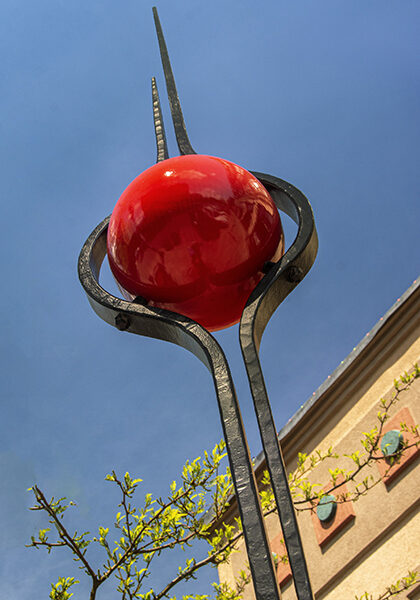
From there, staff worked with guests of the Children’s Inn over the following week to paint the remaining images. Lastly, DeBoer assembled the pieces, recreating Schiller’s original image — with a unique look.
The project inspired by Martinek’s “Beacon” sculpture, said Mary Kolsrud, the Foundation’s vice president for philanthropy.
“Here at the Foundation, we have the privilege of helping people do good things through philanthropy. And what we hear so often is that people who engage in charitable giving do so not out of obligation, but rather, because they are inspired — because of a beacon somewhere along the way that sparked a desire to make a difference,” she said.
“In this year’s annual report, we’re also featuring our long-standing collaboration with Children’s Inn — an organization that serves as a beacon of hope for so many individuals and families who have been impacted by domestic violence and abuse,” she said. “So to have staff and guests of Children’s Inn participate in this project has been especially meaningful for us.”
DeBoer titled the piece “Telephone” after remarking that the process of creating the piece was like an artistic game of Telephone — beginning with Martinek’s original sculpture being interpreted through the lens of Schiller’s camera. From there, Schiller’s work was then recreated by dozens of others under DeBoer’s guidance.
This year’s cover is the latest in a series of collaborative and public art projects DeBoer has led.
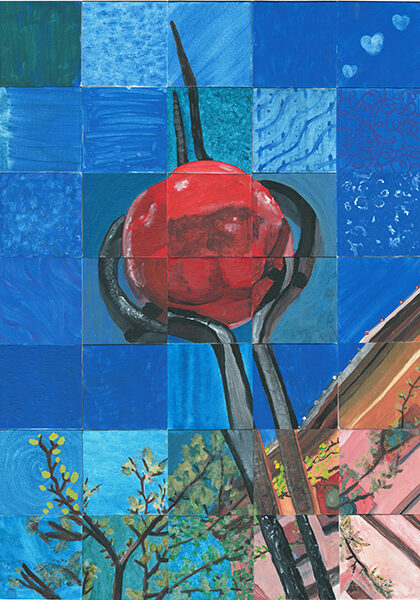
A native of Brandon, and a graduate of the University of South Dakota, DeBoer says he sees art as a tool for community change.
“Using art to activate people and places is a powerful way to drive positive change,” DeBoer said. “One of the biggest factors to a city’s success is if the people who live there love it. When they do, they care about it and invest in making it better. Public art, and especially collaborative public art, is a great way to bolster community pride and civic engagement in cities of any size.”
To that end, DeBoer has led mural projects in Sioux Falls, Clear Lake, Centerville and Canton. Each piece, he said, seeks to tell the story of the city it represents.
“Murals can be a great way to bring a community together. My goal is to help people identify the things in their town that are unique and important to who they are; things they should be celebrating.” he said. “I feel like there are a lot of towns that are in danger of losing sight of those things. My hope is that my work can help unify communities by shining a light on what makes the place they live special.”
Collaborating Together in Art
For the cover of this year's Annual Report, artist Zach DeBoer led a painting class for the staff at Children’s Inn, offering tips and techniques on how to recreate their small portion of an image of Clark Martinek's "Beacon" sculpture onto their 4” x 4” canvas board using acrylic paints. From there, staff worked with guests of the Children’s Inn over the following week to paint the remaining images. Lastly, DeBoer assembled the pieces, recreating Paul Schiller’s original image — with a unique look. Photos by Emily Spartz Weerheim.


